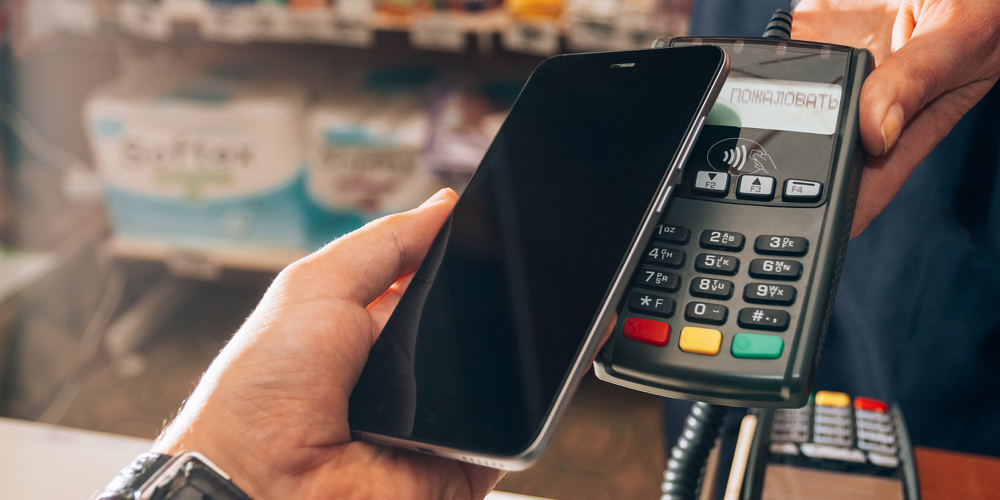Are credit unions ready to create a payment strategy?

To successfully plan a payment strategy, credit unions must first understand industry trends and how they could influence or disrupt the financial industry.
A value chain consisting of card networks, acquiring functions, and issuing financial institutions define our current payment landscape for debit and credit. However, looking at the industry globally – we can see a trending shift where the payment domains will define our future payment landscape.
To understand what the future holds, payment strategists need to better dissect payment verticals and ask how quickly will these verticals adapt and disrupt the industry in the future.
Consider the following verticals as you plan a payment strategy.
- P2P networks are leading toward closed-loop payments ecosystems.
Today, U.S. merchants pay fees to participate in open-loop card networks backed by acquiring and issuing financial institutions. Globally, WeChat & Alipay have built closed-loop ecosystems. This benefits merchants since both consumers and merchants are Alipay’s and WeChat’s primary customers.
For demonstration purposes, in a standard $100 credit card purchase in the U.S., $97.30 might go to the merchant – the remainder are fees paid to the value chain described above. However, in China, a $100 purchase via Alipay or WeChat, $99.30 might go to the merchant.
P2P’s are aggressively working to be the tip of the spear in sidestepping financial institutions and card networks. Consumers are transferring money into mobile wallet applications, such as Venmo, Zelle or Paypal, that can easily establish their own closed-loop ecosystems. The transition, although slow, has already begun. For example, Square Cash and Venmo offer debit cards, allowing consumers to spend mobile wallet funds at merchants.
For now, new platforms still partner with legacy players – like Visa Direct and Mastercard Send. In the future, P2P companies could build a full-fledged closed-loop ecosystem with their own debit cards, encouraging active users and increasing liquidity in mobile wallets.
- The technology could make payroll faster, giving employees more freedom with their money.
Today, salaried employees are paid every other week via legacy rails such as an ACH. Moebs Services reports that bi-monthly pay cycles lead many Americans to turn to credit card debt, risky loans, and overdraft fees to bridge the gap. This has introduced a slew of fintech companies to digitally front pay at low or no cost to workers. The most active in the industry are:
- Earnin, a free model service, that lets consumers be paid for the hours they work while the money is deducted from their next paycheck.
- Dave, which connects to employees’ bank accounts and charges them $1 per month to advance quick cash from an upcoming paycheck.
- Even, partners with big employers such as Walmart to offer on-demand income payments as a benefit.
Startups are enabling companies to pay workers instantly for completed work. GoBank and Uber collaborated to provide Uber drivers a GoBank checking account and debit card, which gives drivers instant access to accrued funds. Stripe and Lyft, Square and Cavia – the list goes on.
William Sheedy, Group President of Visa Inc., Americas, shares, “I think you are going to see bill payment, payroll, peer to peer payments, globally and faster payments where consumers are pushing value to any number of third-parties.”
In the future, faster income shifts how consumers bank and pay for expenses. If payroll is liquid, then employees might start treating mobile wallets like de-facto accounts. Faster payroll might also mean better cash management – further out, better consumer cash flow could lead to new markets around lending and bill payments.
- Tomorrow’s point of sale would have an ambient and cross-channel business model.
Today, plastic cards dominate the U.S. market. A recent survey by TSYS indicated 54% of consumers choose debit cards, while 26% select credit cards, and only 14% specified a preference for using cash.
The problem is that cards are slow and, for e-commerce transactions, quite insecure. We’ve already seen a shift in demand where consumers and merchants are embracing QR codes. U.S. retailers, from Target and Starbucks to Walmart, are using QR codes to facilitate mobile payments and streamline the checkout process.
We do know that mobile devices and payment platforms enable a more dynamic point of sale experience. Mobile wallets digitize existing plastic cards and make them more secure by transacting at the point of sale with “token” instead of the actual primary account number. Contrary to what others might think, Apple’s credit card introduction isn’t a push to take our card business away, but rather a tool to strengthen an existing mobile wallet.
NFC technology is currently used for mobile payments – however, QR codes, NFC, and mobile wallets don’t shift the value chain all that much. In addition, mobile wallets have yet to see widespread adoption.
The future for POS is clear as the market transitions to biometrics for secure, ambient payments. News coverage of biometrics is on the rise as China takes lead with self-service stores using facial recognition to pay and checkout. Alipay recently announced that on 2018’s Singles’ Day in China, the equivalent of Cyber Monday and Black Friday in the U.S. combined, 60% of shoppers paid by taking a selfie or with a fingerprint scan.
In the U.S., financial institutions are playing catch-up, as states and regulators are pushing the brakes as expected. With any new technology influencing the value chain, regulators must balance revenue and loss between the consumer and financial institutions.
However, it’s time we considered these options. Payment strategists need to monitor these verticals and prepare the credit union to adapt and ask where are payment domains today, where will they be tomorrow, and how will it change in the future?





